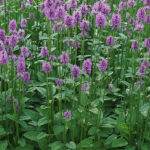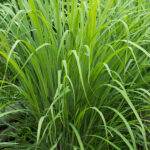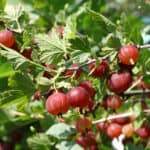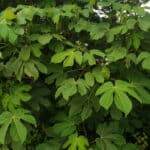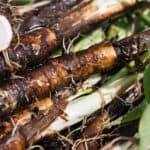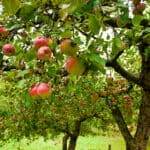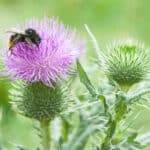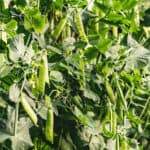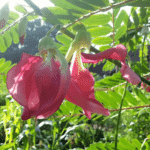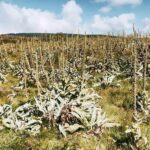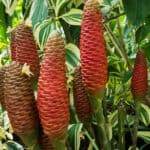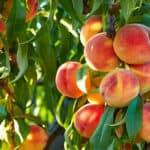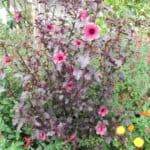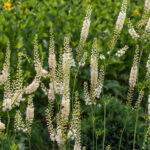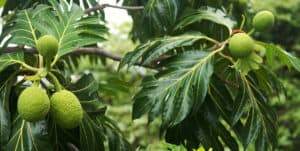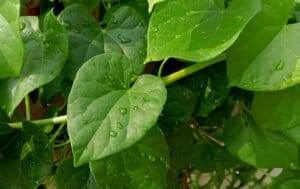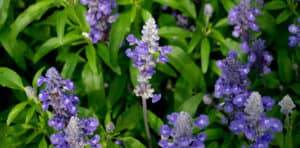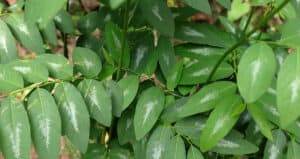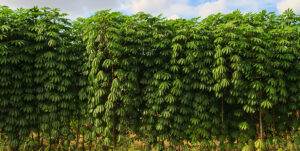Common name: Pot Marigold, Scotch Maricold.
Calendula is an exceptional, easy-growing addition to any garden. With a seemingly endless number of uses, there is no better plant I recommend for beginners to jump-start their journey in permaculture. Please continue reading for an in-depth account of one of my favorite permaculture plants.
Plant Overview
Calendula, also known as pot marigold, is a small annual herb in the Asteraceae family. Despite calendula’s common name, this plant is not in the same family as a traditional garden marigold in the tagetes family.
These plants have simple, alternate leaves on branching stems. The leaves are smooth and wavy. Fine hairs cover the stems of the calendula plant, giving the vegetation a sticky feeling against fingers. Both the leaves and flowers are aromatic when crushed.
Calendula flowers are daisy-like and bright orange or yellow. Some cultivars are coming onto the market with white or bi-colored flowers. I prefer the orange color, which adds a much-needed pop of color to my otherwise dull polyculture vegetable beds.
Calendula blooms all summer long and deep into autumn. They can withstand a light frost but usually, die off during the first deep frost. In my garden, they outlast most of my soft herbs.
Calendula has been grown since the 1600s. It is not native to the Americas but originated from southern Europe and the eastern Mediterranean. Calendula can grow in USDA zones 2 through 11. It prefers a mild climate, as growth slows during the hottest summer days before rebounding again when the weather cools in the fall.
In its preferred temperate climates, calendula will escape their garden beds and readily self-seed. To encourage this, I have lazily scattered calendula seeds through my food forest in the fall, to be greeted by their bright orange blooms by mid-spring, with very little labor on my account.
Medicinal Qualities
Calendula has a long culinary and medicinal history. The plant’s flowers and greens are edible and make an exciting addition to a leafy green salad. They are delicious when cooked and make a passible spinach alternative. As a medicine, use calendula in balms and teas as a general health booster. One of my favorite uses of calendula is incorporating it into anti-itch serums for summer’s pesky bug bites.
Written accounts of this plant state it has been used for wound healing, jaundice, blood purification, and relieving muscle spasms. Please consult a doctor or trained herbalist before using calendula medicinally.
Studies have isolated various compounds in the calendula plant that are known to have medicinal qualities. Some of the medical qualities and activities that calendula performs inside the human body are:
- Anti-inflammatory.
- Anti-bacterial.
- Anti-viral.
- Anti-cancerous.
- Anti-allergy.
- Liver cleansing.
- Antioxidant.
- Anticoagulant.
- Anti-microbial.
- Antioxidant.
- Antifungal.
- Antiparasitic.
- Affective against tuberculosis.
- Reduces vascular tension.
Functions in Permaculture
Calendula can neatly fill niches in a forest’s herb and groundcover layers. In addition to its medicinal properties, it serves multiple valuable functions in a permaculture landscape, such as:
- Beneficial insect attraction.
- Nutrient accumulation.
- Weed suppression.
Beneficial Insect Attraction
Calendula’s bright orange and yellow blossoms attract many different pollinators in all seasons. It is rare for me to wander the garden on an early morning and not notice a bumblebee slumbering in the center of a calendula blossom. Planting calendula will ensure your yard is full of bees and butterflies.
In addition to pollinating insects, calendula attracts parasitic insects that can cut down on typical garden pests. For example, hoverflies, who feast upon aphids, love calendula. Likewise, parasitic wasps flock to calendula before destroying cabbage worms and other larvae that may prey upon your young tender greens.
Nutrient Accumulation
Calendula can tolerate many soil types and create biomass to contribute to soil composition. The thick branching root system runs deep for a plant of this size. The roots draw nutrients from deep within the soil into their plant mass. These nutrients get incorporated into the ground when the plant dies.
The growth of calendula, when allowed to self-seed, mimics the growth habit of weeds, quickly filling niches where the soil is over-compacted or missing nutrients. Gardeners can use this quality to their advantage by allowing calendula into areas in the garden that need a soil boost. Throughout a growing season, calendula will draw more nutrients to the topsoil and loosen compacted soil. Then, next year, calendula can be replaced with a new plant, which will reap the benefits of improved soil composition.
Weed Suppression
When given space to grow, calendula grows low to the ground, often with spreading branches. Each flower stem can grow up to two feet tall, but I have found they often grow two feet close to the ground when given ample space. This habit makes calendula helpful as a weed suppressant. Prevent weeds from growing in your landscape by allowing calendula to grow into the ground cover layer.
After harvesting what is needed for food and medicine, calendula can be pulled up and used as mulch! I remove the seed heads (unless you hope it will self-seed), pull up the plant, and lie it down as mulch next to trees and shrubs that require additional attention. End-of-season calendula makes an excellent mulch and will aid in suppressing next year’s weeds.
Propagation and Planting
Calendula likes well-drained soil in full sun, though it can tolerate part-shade. To grow, sow seeds directly or start indoors six to eight weeks before the last frost. Plant the seeds one-quarter to a half-inch deep. These seeds need sunlight to germinate, so only a light dusting of soil is necessary to induce germination. The seeds germinate in 10 -15 days when the ideal temperature is 65 degrees. Cooler temperatures will delay germination. Once established, calendula will readily self-seed year after year.
Successive sowing will produce fresh flowers all year, though you can count on it to self-seed. Remove old flower heads to prevent self-seeding or leave them alone to allow natural propagation. Given the opportunity, calendula will fill any empty niches in your permaculture landscape.
Growth and Care
Calendula grows best in loose, rich, fertile, well-drained soil. They are relatively hardy and tolerate less ideal conditions well. They are well adapted to partial or dappled sunlight and are very happy in the herb layer of a food forest. Since they flounder in extreme heat, planting under a canopy’s protection gives the herb enough relief from the heat to maintain its beautiful flowers all summer long.
Calendula is not picky about water and will survive in low water conditions. Water calendula at least an inch to an inch and a half per week to help it get through the hottest summer months.
Calendula is not known to be fragile against bugs or diseases. Still, it may be susceptible to common garden pests like aphids and powdery mildew when they are already present. Conversely, calendula helps my garden by attracting beneficial insects.
Calendula does not need any unique fertilization but, like all plants, would benefit from occasional additions of organic matter to the soil. Calendula doesn’t need pruning, but deadheading spent flowers will encourage more growth. All in all, this plant is low maintenance.
Harvesting
I like to harvest my calendula blossoms at least once per month throughout the summer when there are enough blossoms available at one time to make processing worthwhile. To collect the blossoms, I use a sharp clipper or scissors to snip the bloom away from the plant right at the base of the flower.
Calendula makes an excellent cut flower for arranging. Harvest the blossoms when fully expanded, as the flowers do not open further after cutting. The stems of each flower are only one to two feet long, so be sure to cut the stem near the base of the plant to ensure you have a long enough stem to work with for flower arranging.
If my calendula plants have become overzealous, I will harvest the entire plant by pulling it out at its roots and use the greens to beef up a salad or vegetable dish.
Processing and Utilizing
Many past and present cultures have used calendula for medicine, dye, food, and cosmetics. The oil pressed from the flowers has been used for perfumes. In addition, the entire plant is excellent for soothing rashes and other skin abnormalities.
I dry calendula blossoms and greens on the lowest setting in the dehydrator, about 95 degrees Fahrenheit. Then, I use the dried herb in a skin and gut-calming tea blend. When dried, the orange blossoms hold their color and color the tea nicely.
At the end of each season, right before the first deep frost, I harvest as much of the plant as possible to make herbal tinctures and oils. To make an infused oil, fill a quart mason jar halfway with fresh calendula flowers and greens and pour in neutral oil, I like safflower oil, but any neutral oil will do. Then, let the oil sit for three to six weeks, shaking the jar occasionally. If you are impatient, warm the jar gently in a crock pot filled with water for a faster infusion. When the oil has taken on the plant’s color, strain out the plant matter and decant away moisture from the oil. I use this oil in blends and balms, a favorite among the youngest family members most prone to bug bites and bee stings.
In Review
Take advantage of this helpful plant in your next permaculture design. It has significant benefits for humans and will contribute to soil health in your garden. Use calendula as a medicinal herb for skin, gut health, and general well-being. Add calendula greens to your next leafy salad for a new texture and countless valuable minerals. I urge you to include calendula in your next garden plan. I promise you won’t be disappointed!
References
Jan, N., Andrabi, K. I., & John, R. (2017, December). Calendula officinalis-an important medicinal plant with potential biological properties. In Proc Indian Natn Sci Acad (Vol. 83, No. 4, pp. 769-787).
Kemper, K. J. (1999). Calendula (Calendula officinalis). Longwood Herbal Task Force, 1.
Leach, M. J. (2008). Calendula officinalis and Wound Healing: A Systematic Review. Wounds: a compendium of clinical research and practice, 20(8), 236-243.
Muley, B. P., Khadabadi, S. S., & Banarase, N. B. (2009). Phytochemical constituents and pharmacological activities of calendula officinalis Linn (Asteraceae): a review. Tropical journal of pharmaceutical research, 8(5).

